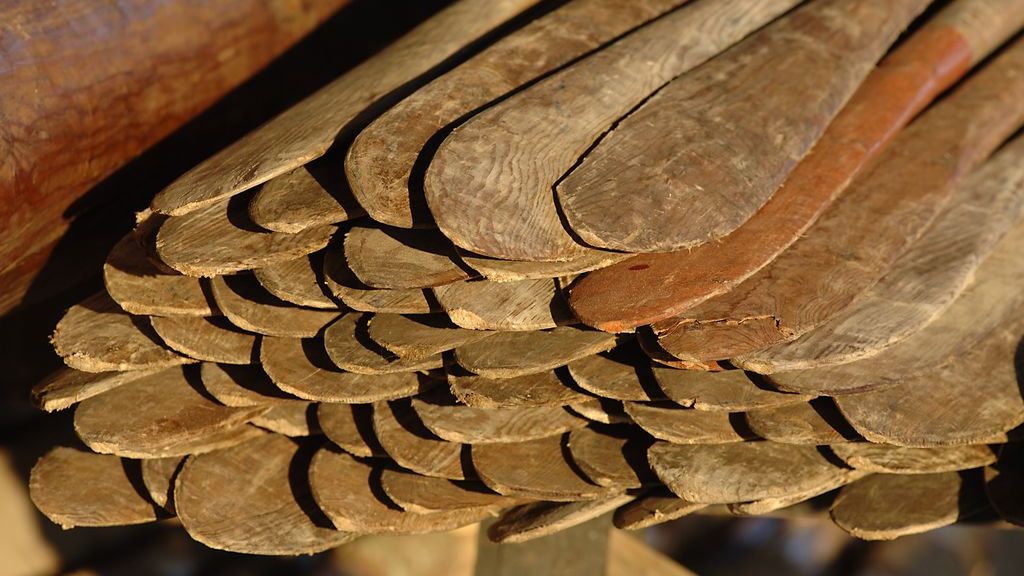Most people connect boatbuilding with heavy oak logs, the rhythmic sound of axes chopping and the scent of tar – and this is exactly how you can always experience boatbuilding at the open, working boatyard. Fewer people, however, connect it with computers, blogs and social media.
Yet it is just this connection between these two very different worlds that the Viking Ship Museum opened up for in 2015, when the Museum’s boatbuilders reconstructed the Gislinge Boat – a 7.7m long working boat from ca. 1130. ‘Gisle’ – as the boat was named – is the first boat built according to the principles of ‘open source boatbuilding’. Here, the Museum’s craftsmen and researchers share all their knowledge and experiences of the Gislinge Boat via web and social media. This new open and cross-disciplinary approach to the Museum’s boatbuilding projects was developed in order to involve our guests even more in the boatbuilding process, not only when they visit the Museum but also online via social media.
Open source boatbuilding was a great success: thousands of people followed the project online, over 300 people downloaded the free working-drawings for the Gislinge Boat, and over the winter, the project team started receiving confirmation of the first completed scale models of the boat in Canada and the USA.
After Gisle's launch last October, the project team carried out a series of sailing and rowing trials, an important step in any experimental archaeological boat or ship reconstruction. The harsh sailing conditions of the Danish autumn are perfect for testing a new boat and several questions quickly arose: could the height of the freeboard – the part of the boat above the water – be increased? Would altering the sail’s shape have an impact on the boat’s trim? And, from an open source perspective, could we get even more people involved in building their own Gislinge boat?
Back to the beginning
These questions and more prompted the Museum’s ship reconstructor, Vibeke Bischoff, to re-examine the documentation of the original find material to see what scope there was for reinterpretation of the boat’s form. She discovered several details that led her to make changes to the 1:5 scale model, which had provided the basis for the two previous reconstructions of the Gislinge Boat: Estrid, built in 1995 and Gisle, built in 2015. This revised model – Gislinge III – will now be built in full-scale.
Building on previous experience
Work has already begun on this new reinterpretation of the Gislinge Boat – the keel has been laid and the first oak log has been cleaved. For the next six months, the boatyard will once again echo to the sound of axes chopping into oak. For the first time, the boatbuilders will build the same boat two years in a row. This offers them a unique opportunity to immerse themselves in their craft. The previous build is still fresh in their minds, and this familiarity with both the materials involved and the original boat they are reconstructing makes for a more streamlined approach to their work. In this way, they get a little closer to the boatbuilders of the past, who primarily worked within a tradition where experiences were handed down.
Open source boatbuilding
This year’s project will of course also continue with open source boatbuilding, where each step of the boatbuilding process is shared online via the project website, Facebook and Instagram. The working drawings for last year’s Gisle are still available for download and once the revised working drawings for Gislinge III are finalised, they’ll also be released on the project website.
Visitors to the Museum can also take part in the open source experience, as daily guided tours bring them behind the scenes at the boatyard. Every day, the boatbuilding workshop also allows guests the chance to try their hand at cleaving logs, shaping planks and other boatbuilding techniques.
Those who get bitten by the boatbuilding bug, can sign up for the two-day boatbuilding course, which will be held at the boatyard on the 24th – 25th September. Theme weeks spread over the summer will see the boatbuilders, blacksmith, ropemaker and sailmaker open their workshops and demonstrate the skills and materials involved in building the Gislinge Boat.
The Viking Ship Museum invites everyone to come and build with us at the Museum, and follow the progress online, during a summer of experimental archaeology and maritime craftwork!









